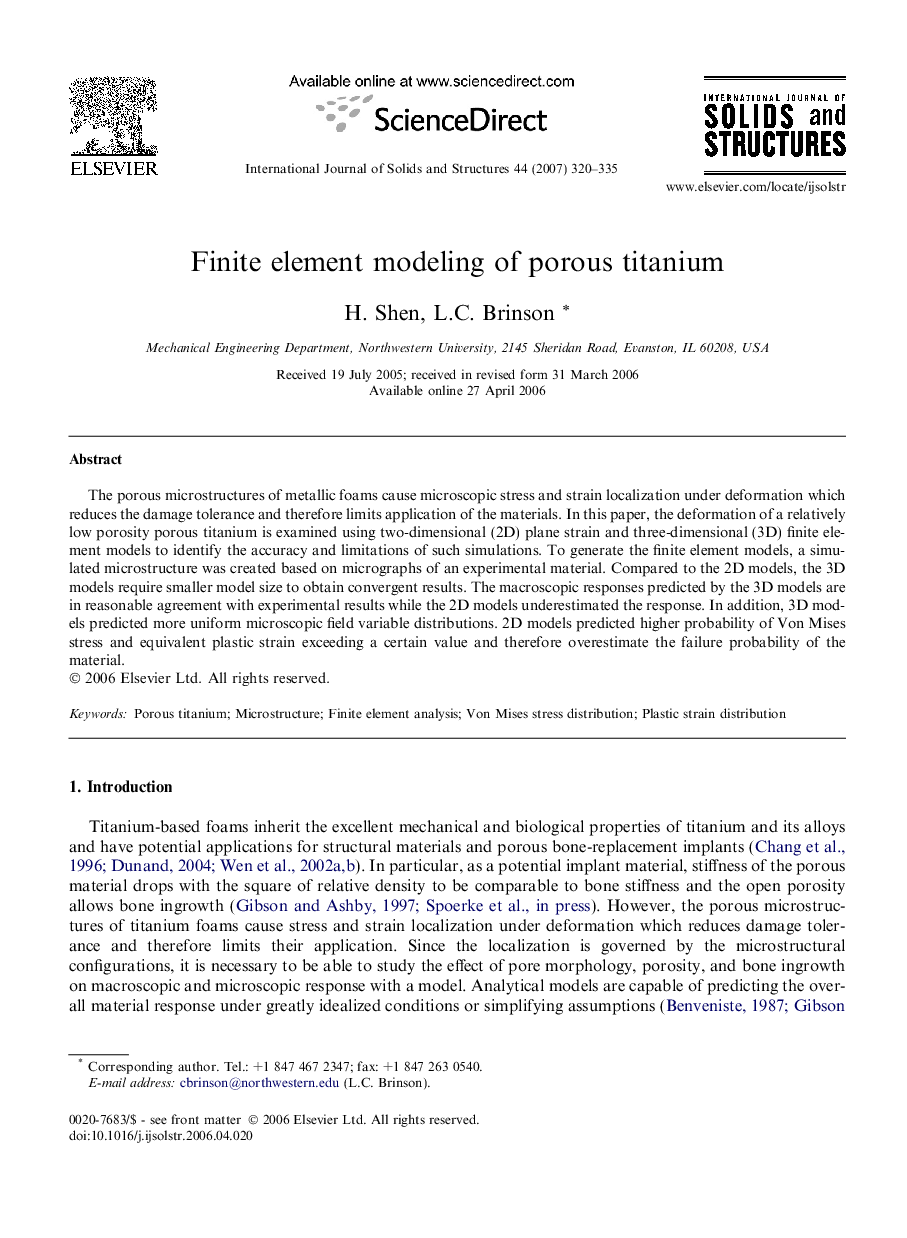| Article ID | Journal | Published Year | Pages | File Type |
|---|---|---|---|---|
| 280379 | International Journal of Solids and Structures | 2007 | 16 Pages |
The porous microstructures of metallic foams cause microscopic stress and strain localization under deformation which reduces the damage tolerance and therefore limits application of the materials. In this paper, the deformation of a relatively low porosity porous titanium is examined using two-dimensional (2D) plane strain and three-dimensional (3D) finite element models to identify the accuracy and limitations of such simulations. To generate the finite element models, a simulated microstructure was created based on micrographs of an experimental material. Compared to the 2D models, the 3D models require smaller model size to obtain convergent results. The macroscopic responses predicted by the 3D models are in reasonable agreement with experimental results while the 2D models underestimated the response. In addition, 3D models predicted more uniform microscopic field variable distributions. 2D models predicted higher probability of Von Mises stress and equivalent plastic strain exceeding a certain value and therefore overestimate the failure probability of the material.
